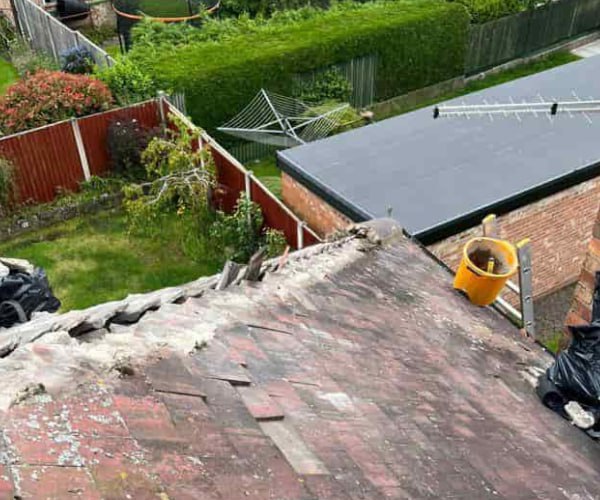Are Your Fascias Starting to Sag? Here’s What It Means
Introduction
If you’ve noticed your fascias starting to dip, bow, or sag along the roofline of your property in Sandy, Bedfordshire, it’s not something to ignore. Fascias might not always grab your attention the way missing tiles or a leaking gutter would, but they’re a crucial part of your roofing structure. When they start to show signs of trouble, it’s often a signal that something more serious is happening beneath the surface.
At FP Roofing Sandy, we’re here to break down what sagging fascias really mean, what might be causing them, and why acting early can save you both stress and money.
What Are Fascias—and Why Do They Matter?
Fascias are the long, horizontal boards fixed directly to the lower edge of your roof. They support the bottom row of tiles and provide a base for your guttering. Structurally, they help keep the roof stable and weather-sealed. Visually, they give your roofline a neat and finished appearance.
When they start to sag, it’s not just a cosmetic problem—it’s often a sign of underlying damage or poor installation.
Common Causes of Sagging Fascias
Here are some of the usual suspects behind sagging fascias:
- Water Damage: Fascias are frequently exposed to the elements. If gutters overflow or roof leaks go unchecked, moisture can weaken the timber over time.
- Rotting Wood: In older properties, wooden fascias can decay if not maintained. Once rot sets in, the structural integrity is compromised.
- Improper Gutter Support: Heavy gutters filled with debris or ice can pull down on the fascia, causing it to warp or collapse.
- Poor Installation: If fascias weren’t installed properly—using the wrong materials or without enough fixings—they may not hold their shape for long.
- Pest Infestation: Birds, insects, or rodents nesting behind fascias can damage the material and force it out of alignment.
Why You Shouldn’t Delay Repairs
A sagging fascia is like a canary in a coal mine—it often points to bigger issues that can escalate quickly. Ignoring the problem can lead to:
- Leaking gutters and water pooling near your foundations
- Exposure of roof timbers to rain and frost
- Entry points for pests or birds
- Visible drop in kerb appeal and property value
What Can Be Done?
At FP Roofing Sandy, we offer professional fascia repairs and replacements tailored to your property’s needs. Depending on the extent of the issue, the following steps might be required:
- Removing and replacing rotten or bowed fascia boards
- Reinforcing guttering brackets or upgrading to a more suitable system
- Inspecting adjacent soffits and eaves for damage
- Installing uPVC fascias for long-term durability and low maintenance
Key Benefits of Addressing Fascia Problems Early
- Preserves the structure of your roofline
- Prevents water ingress and costly internal repairs
- Improves overall appearance of your home
- Helps your guttering function more efficiently
- Adds value and long-term peace of mind
Conclusion
Sagging fascias might seem like a small issue, but they often point to much deeper roofing concerns. At FP Roofing Sandy, we’ve helped homeowners across Bedfordshire restore the integrity and appearance of their roofs with effective, long-lasting fascia solutions.
Don’t wait until it gets worse—contact us today for an expert assessment and let us help you keep your roofline strong, straight, and weatherproof.
Call us on: 01767 667 088
Click here to find out more about FP Roofing Sandy
Click here to complete our contact form and see how we can help with your roofing needs.

